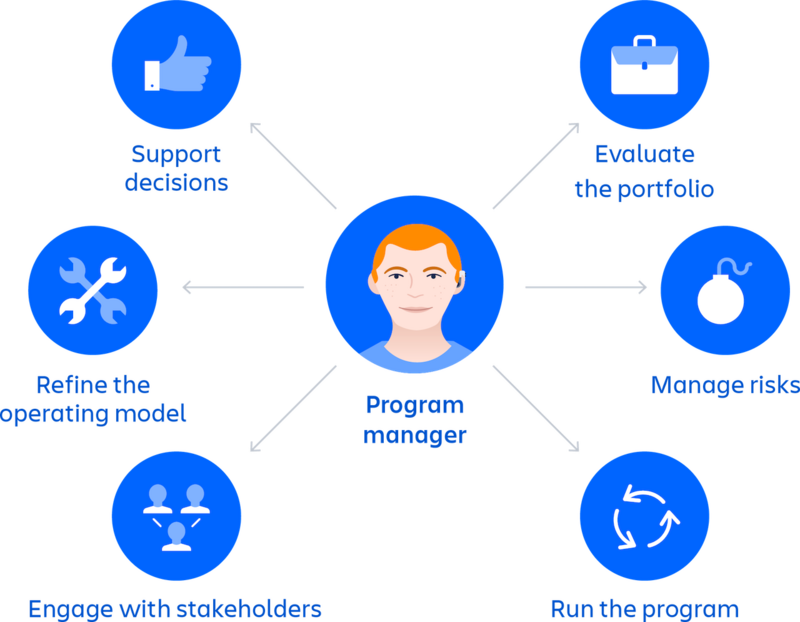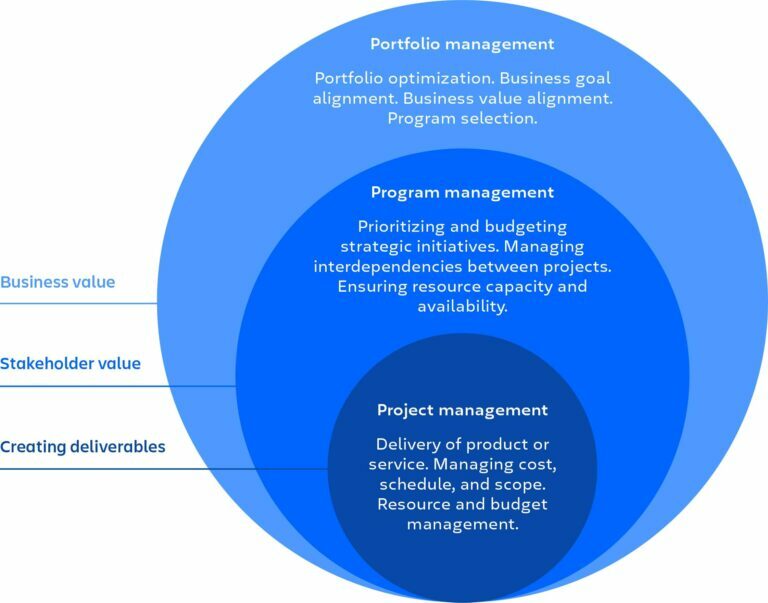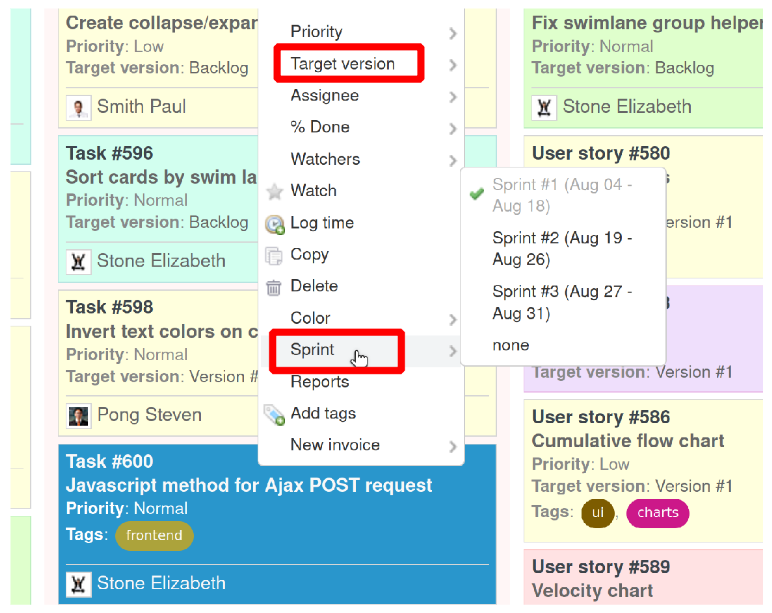In today’s turbulent business environment, companies are constantly seeking ways to adopt Agile first and then scale it efficiently. .
No secret, the Agile management has many catchwords, and not least of all Agile Program Management. But what does it really mean?
With RedmineUP, you are going to clear up some of the mysteries surrounding this form of management and figure out its key concepts, best practices, and major roles. Stay tuned!
With this article, you will learn the following:
- Agile Program Management: Definition & Key Concepts
- Roles and Responsibilities in Agile Program Management
- Agile Program Management vs Agile Project Management
- Best Practices to Implement Agile Program Management
Before reading the article, we suggest you familiarize yourself with our company by watching the video.
Agile Program Management: Definition & Key Concepts
Agile Program Management (APM) is a specific term used to describe common practices Agile organizations tend to implement so that their interrelated work be executed in a way that highlights the delivery of value for teams and stakeholders. Unlike project management, APM involves responsiveness as the measure of value, and not efficiency or reliability.
In layperson’s terms, APM is about managing and launching multiple interlinked Agile projects within a company. This aims to achieve the best results with Agile concepts in practice and overall business demands in mind. To make it happen, a company will need a starter kit of structures created for scaling Agile projects into APM. Luckily, such a remedy has already been successfully tested!

The Scaled Agile Framework (SAFe) is a common compilation of practices that help companies arrange the workflows of various Agile teams who are running similar projects or products. Usually, companies form an Agile Release Train that is represented by several teams responsible for tracking dependencies and agreeing on priorities. This way teams are empowered to collaborate in a more cohesive way and deliver results quicker.
APM differs from traditional management forms because change in itself is not considered as something negative. Instead, APM states that change is constant since customer feedback increases the deliverable value. So, change is always welcomed until it fulfills the customer’s demands.
Migrate to secure hosting
Don't waste your time on Redmine maintenance. Hire experts and focus on your projects
Then we should say a few words about the above-mentioned responsiveness. This concept is what defines a true value in APM: delivering what customers want and when it is needed. Giving a product that we have promised is one thing, but giving the right value is a game changer. Only by being responsive is it possible to win your customer loyalty.
Last but definitely not least, the level of cross-team collaboration is highly important in APM. Teams have to cooperate well if they are interested in achieving the shared goal and delivering a personalized customer value. Stakeholders are also active players in such a complex iterative environment, they regularly participate in product development as well as its delivery.
RedmineUP Solutions
Extend your Redmine functionality with our solutions and services
Roles and Responsibilities in Agile Program Management
In APM, there are several common roles involved. According to the type of work, companies may hire experts in different areas, be it software development, marketing, or business branding. And it is high time to learn them one by one.
Agile Program Manager (or Agile Release Train Engineer in SAFe) is a person who leads all Agile teams who are involved in delivering a program.
The scope of responsibility includes the following:
- Cross-project coordination. Scheduling, dependency management, risk assessment.
- Communication mediator. Transparency and cross-team synchronization.

Chief Architecture Owner/System Architect/Engineer is a specialist with a technical background who dominates a deep knowledge of software architecture.
The scope of responsibility includes the following:
- Technical documentation. The context and intent of each component. Trade-offs analysis.
- Functional requirements. Systems and subsystems involved.
- Non-functional requirements. Security, scalability, reliability, etc.
Product Management coordinates program teams, helps program leaders decide which products are to develop and what deadlines to establish.
The scope of responsibility includes the following:
- Intermediary. Between customers, internal stakeholders, and teams.
- Product roadmap. Setting and further adaptation.
- The synthesis of information. Market analysis. Ongoing conversations with all departments involved.
Business Owners can be represented by a CEO or a group of stakeholders who take control of whether the program delivers customer value or not. Furthermore, these are people whose responsibility is making sure the objectives of a specific program are matching with the ones of the large business strategy.
The scope of responsibility includes the following:
- Lean Portfolio Management meetings. Discussions on changes, desired outcomes, and strategy alignment.
RedmineUP Solutions
Extend your Redmine functionality with our solutions and services
Agile Program Management vs Agile Project Management
Often mistakenly considered as synonyms, Agile program management and Agile project management cover completely different management layers.
A project is a specific kind of work with a predefined scope of work, strict deadlines, and desirable deliverables. At the same time, programs normally contain many interrelated projects, and all of them in the long run multiply the value of larger strategic initiatives.
Simply put, projects focus on specific, measurable outputs while programs unlock new opportunities by helping an organization achieve long-term goals.

Best Practices to Implement Agile Program Management
Agile program management opens up new business facets and brings various benefits, from keeping stakeholders updated to better progress overseeing. But how to find this new philosophy, where to start?
First, find the right framework. Scrum, Kanban, SAFe, whatever that covers your business needs. That is not a simple choice, so you might need some help for a smooth transition. A savvy Agile coach definitely will not be an extra. He acts as a facilitator and advisor, helping teams adjust Agile’s rules to their workflow.
Second, keep in mind core Agile principles and major Agile ceremonies. These are key components of so-called Agility. And without them, APM would undoubtedly fail. To brush some basics of Agile up a bit, go check our previous posts!
As for the tips, we highly recommend you use these practices. They will definitely come in handy when you start implementing APM.
Migrate to secure hosting
Don't waste your time on Redmine maintenance. Hire experts and focus on your projects
- 1. Say NO when necessary. Every voice must be heard unless it is relevant. Filter out bad ideas and drop unpromising projects. When it leads your team nowhere, you are wasting time and resources. That is why get ready and be assertive.
- 2. Do not overpromise. Please be realistic. Empty promises are far from the things stakeholder would love to hear. Give them feasible deadlines, and your team will thank you for not being stuck in the crunch mode.
- 3. Treat failure like a scientist. Some products fail, and that is okay. Instead of the blame game, consider this experience a lesson. #1 New York Times bestselling author John C Maxwell claims, life’s greatest lessons are gained from our losses. So, turn your failure into a learning experience and find a way to improve your work.

- 4. Make kickoff meetings for all. Remember that any stakeholder or team member invests in general alignment, so all must be on the same page. Only through ongoing communication among all the teams and planning layers can APM progress.
- 5. Develop an easily accessible backlog. Teams should have quick access to all the upcoming work they are going to do. For such needs, look no further: RedmineUP’s Agile Plugin enables users to make program fully customizable backlogs with a few clicks.

Whatever meets your unique requirements, RedmineUP is an all-in-one solution for your Agile program management. Available on-premises and in the Cloud, it covers each step of program planning, executing, and reporting, helps your team get more done and increases the overall work velocity. Try RedmineUP’s Demo and test its features yourself. At no cost. Do not miss the chance!
RedmineUP Solutions
Extend your Redmine functionality with our solutions and services
Learn from our video below where to find the Sprint filter on your Agile board in Redmine.


